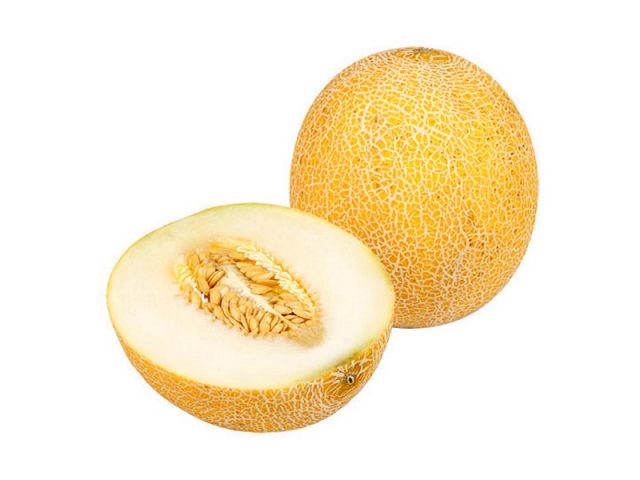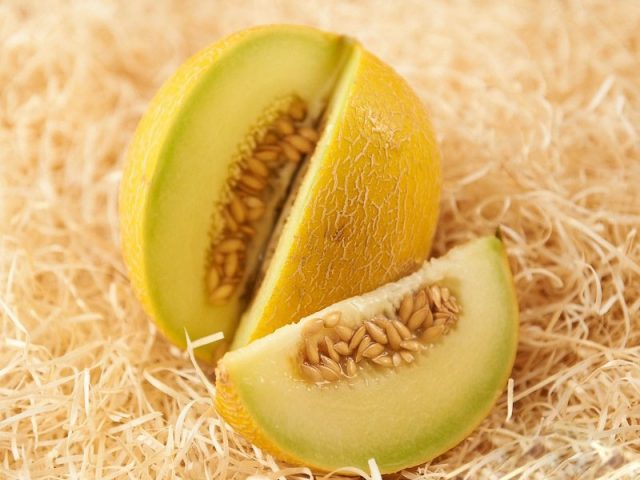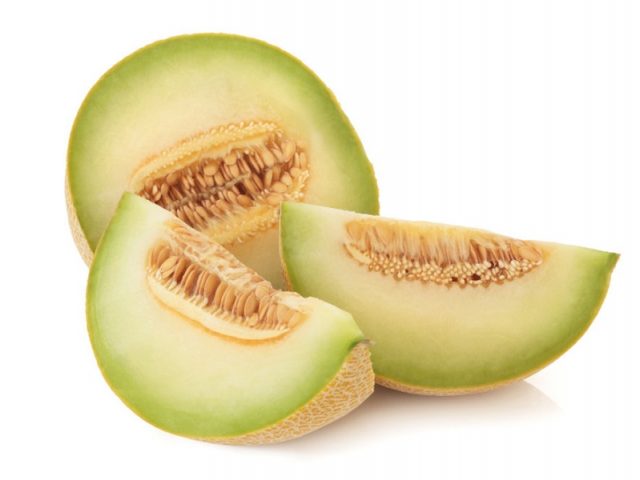Content
Melon Galia deserves special attention due to its wide range of technical characteristics, tasty and healthy fruits. The cultivation of this melon crop is gaining popularity, as the number of fans of the unpretentious plant in care is growing.
Description of Galia melon
Melon Galia belongs to the mid-early varieties. An unpretentious plant originally from Israel. It is grown in the United States, Chile, Panama, and South American countries. The culture adapts perfectly to all weather conditions.
Fruits are large, rounded with white-green flesh and orange-yellow peel. Melon of the Galia f1 variety has positive reviews, is famous for its excellent taste and aroma.
The fruits are used in cooking for the preparation of exquisite dishes, as well as for the preparation of jam and preserves. The large amount of sugars in the Galia melon makes it possible to make candied fruits from it, which are an integral part of many desserts.
Pros and cons of the variety
The positive characteristics of the Galia melon include:
- frost resistance;
- unpretentiousness;
- pleasant taste;
- transportability.
The variety has no disadvantages.
Melon cultivation Galia
Melon Galia requires attention from the gardener, proper planting and providing favorable conditions for growth. In order for the bushes of the plant to fully develop, and the harvest to please with its quality, it is necessary to correctly plant and carry out all the necessary care measures. You can enjoy the sweet taste and bright aroma of healthy fruits in early August.
Seedling preparation
For sowing the Galia melon, it is necessary to use well-formed material obtained from the harvest in two years. Before planting, to improve seedling, place the seeds for 12 hours in a solution of boric and sulfuric acid or in another growth stimulator.
When growing in the middle lane, you need to take care of the hardening of the seed in advance. To do this, it is necessary to immerse it in warm water and leave it at room temperature for a day. Then transferred to the refrigerator for 18 hours. When the seeds swell, they are sent for sowing in open ground or for seedlings.
Selection and preparation of the landing site
The selection of the correct site is important for the normal growth and development of the crop. Melon Galia does not tolerate shade and grows in sunlit areas.
The soil must be dug up in advance and fertilized with organic substances, using at least 4 - 6 kg of humus per 1 sq. m landing area. If the soil is loamy, add some river sand to make it loose.
Landing rules
Basic rules for planting Galia melon in the open field by seed method:
- Dig small holes 5 cm deep at a distance of 60 cm from each other.
- Add 1 tsp into each hole. any nitrogenous fertilizer.
- Place seeds and sprinkle with earth.
Planting Galia melon in seedlings at home depends on the weather conditions of the region. On average, seed material for seedlings is laid in the second decade of April. To prepare the soil, it is necessary to mix peat, humus, turf soil and add 1 tsp. superphosphate, ash, urea and potassium sulfate. Mix all components thoroughly.Melons of the Galia variety may not tolerate the pick, so planting is carried out in small peat pots 10 cm in diameter. The prepared soil should be folded into containers and moistened. Send 3 seeds to a depth of 2 - 3 cm, cover with a centimeter layer of sand. After a week, remove underdeveloped shoots from each pot, leaving progressive shoots. It is recommended to plant seedlings in the ground at the end of May. The term is influenced by the climate of the region and the age of the seedlings. The optimal age for planting plants will be 4 - 5 weeks.
Watering and feeding
Comprehensive care is very important, as it can provide high yields and disease resistance. The main thing to remember is loosening the soil: it provides the root system with oxygen. A simple and understandable procedure for every gardener will also help - removal weedspreventing the active growth of the plant. When watering Galia melon, take into account that the water should be warm heated to +22 oC. Do not allow moisture to enter the root collar: this can lead to a whole list of diseases, as well as to a decrease in yield or its complete loss.
Feeding the Galia melon should be combined with watering. After 2 weeks after planting, add ammonium nitrate (1 tbsp. L. Per 10 l of water) into the ground. Each bush should get 2 liters of solution. During the flowering period, repeat the procedure with the same composition or use organic matter in the same ratio. Loosen the soil after fertilization. This will help nutrients to enrich the plant's root system by staying in the soil longer.
Melon of the Galia variety can survive without mineral nutrition, especially if the soil is fertile, well filled with organic matter. In this case, the fruits are smaller, but sweeter and tastier.
Formation
When grown outdoors, Galia melons should not be forgotten about shaping. The purpose of the procedure is to use all the forces of the plant for the growth and development of fruits, and not for gaining green mass. After the formation of second-order shoots and the beginning of the formation of the first fruits, the tops of the shoots must be pinched. Ovaries on third-order shoots should be removed immediately so that the rest are larger and more powerful.
More on melon shaping:
Harvesting
Only ripe fruits should be collected, when they acquire a characteristic color and aroma: unripe melons of the Galia variety in the plucked form no longer ripen. The harvest is stored for no more than 20 days.
Diseases and pests
To get a good harvest, you need to take timely measures to combat diseases and pests.
According to the description of the variety, Galia melon is resistant to diseases and pest attacks. But for prevention, it is required to treat the bushes with special preparations, observing the dosage recommended by the manufacturer.
| Disease | What is characteristic | Preventive measures | How to fight |
| Powdery mildew | The appearance of white spots on leaf blades and stems. The leaves turn brown, dry out and curl. | Remove weed residues from the beds in a timely manner. | Treat with a solution of colloidal sulfur in a ratio of 50 g per 10 liters at weekly intervals. Spray finally 20 days before harvest. |
| Peronosporosis | The formation of yellow spots on the leaves, their further increase. A gray powdery coating appears on the back of the leaf blade. | Before sowing, soak the seeds in a solution of potassium permanganate for 20 minutes. | Spray with a solution of urea in a ratio of 1 g per 1 liter of water or with special ready-made preparations. Repeat after 10 days. |
| Copperhead | Brown spots on the leaves quickly affect the entire organ. The foliage curls up and dries up. Scourges become fragile and thin. The fruits are deformed. | Loosen the soil after each watering. | Spray the plant with Bordeaux liquid (1%), sprinkle with sulfur. Repeat after 10 days. |
The main pests of the Galia melon are spider mites, wireworms, and gnawing jays. The main thing is to notice the problem in time and get rid of it with the help of special means and folk methods.
Melon Galia reviews
Conclusion
Melon Galia received recognition from gardeners who know a lot about melon crops. If you carefully study all the recommendations for planting and caring for this variety, the plant will certainly thank you with a delicious, sweet harvest.












